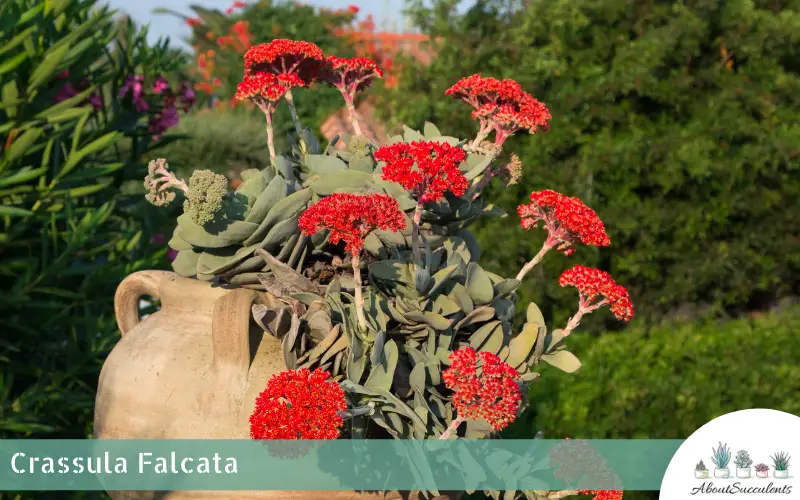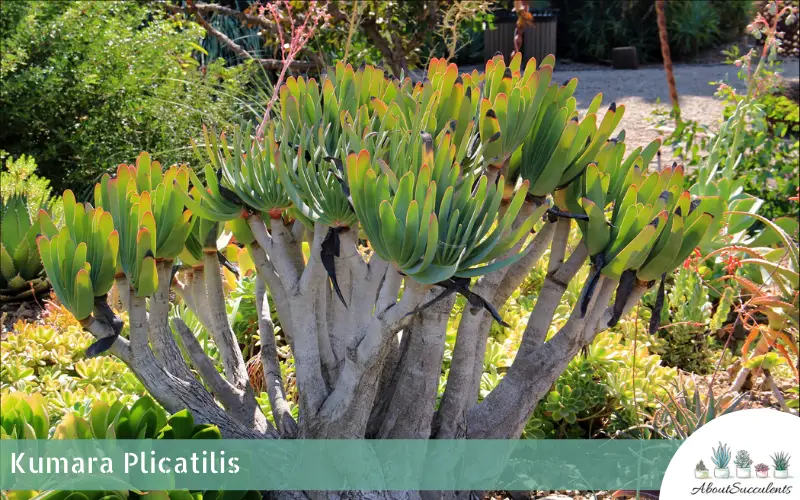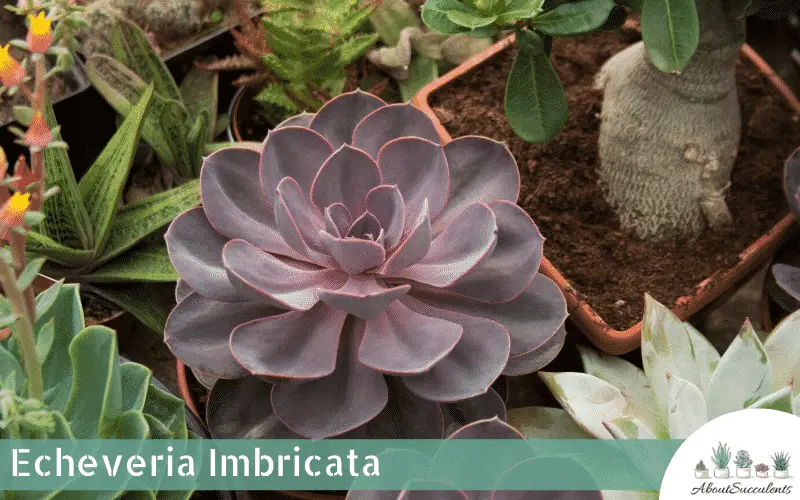In addition to relieving stress and making them feel happier, gardening has become a popular hobby for many people because the activity enhances the natural beauty of their homes. Thanks to succulents, anyone can feel like a professional landscaper.
These peculiar-looking plants that come in various shapes, colors, and sizes never fail to draw attention in an outdoor garden. Someone who never thought he had a green thumb and decides to become a horticulturist will quickly realize succulents are fun and easy to grow and care for.
It won’t matter if you live in a region that experiences drought or freezing temperatures. There are hundreds of varieties of succulents that you can grow in your outdoor garden.
2 Things To Know Before You Start Growing Succulents
Succulents are an excellent choice for budding landscapers who reside in a neighborhood where water-wise gardening is encouraged because of inadequate water supply.
These durable plants store plenty of water in their leaves and stems. Succulents can thrive in poor soil conditions for long periods without water. Landscape artists love adorning outdoor rock gardens with succulents that are grown in pots and on the ground.
Before you start growing succulents outdoors, here are 2 important things you need to know about these magnificent and highly-durable plants:
- Sunlight – Unless otherwise noted, succulents need to get at 6 hours of partial to full sunlight every day. Aside from producing their food, a regular dose of sunlight helps succulents achieve their full spectrum of color. Avoid exposing your succulents to the intense rays of the afternoon sun.
- Water – Overwatering is the number one cause of succulent death. If the plant’s roots are immersed in moist conditions for a long time, they will rot and expose the succulent to the risk of acquiring a fungal infection. Only water the soil when you’ve confirmed that it’s 100% dry.
You can summarize these 2 guidelines into 1 simple and easy-to-remember rule:
Sunlight every day but water only when the soil has completely dried out.
6 Best Outdoor Succulents
If you’re part of a succulent community, we prepared this list of the best outdoor succulents you can grow in your garden and share with your fellow aficionados.
1. Agave parryi truncata
One look at Agave parryi truncata and you’ll know why it’s also called “Artichoke Agave”.
You’ll love how Agave’s tightly-formed rosettes that feature thick, fleshy, silver-blue colored leaves add volume, color, and texture to your outdoor garden. Upon close inspection, guests will discover that the leaves have spines and are outlined with reddish-brown colored teeth.
Artichoke Agave can grow to a height of 1 to 2 feet (30 to 60 cm) and cover up to 2 to 3 feet wide (60 to 90 cm) of ground.
It will take more than 10 years for Artichoke to bloom its thick clusters of yellow flowers with orange-colored buds. As a monocarpic succulent, Agave will die after blooming.
However, you’ll be given a parting gift of pups or offsets that you can use to propagate more of the species.
2. Aeonium “Mardi Gras”
With its compact and colorful rosettes that are easily identifiable by their bright yellow to emerald green variegation which spread out to burgundy and pink-tinged leaves, growing Aeonium “Mardi Gras” will make these festive succulents the life and party of your outdoor garden.
Aeonium Mardi Gras is a monocarpic succulent but it will take several years before a rosette can produce flowers. Thankfully, the rosettes also produce offsets for propagation.
These are small succulents and don’t grow more than 4-inches (10 cm) tall and 6-inches (15 cm) wide. Thus, Aeonium Mardi Gras is perfect as potted succulents where your imagination can create amazing arrangements in a rock garden.
3. Crassula falcata

Experienced horticulturists grow Crassula falcata for its flowers that come out in the summer or early fall season.
The flowers range in color from bright orange-red or fiery red and are the reason why Crassula falcata is commonly known as “Scarlet Paintbrush”. Come closer to these flowers and you’ll detect a slight cinnamon scent.
Another name for Crassula falcata describes a second unique feature of the succulent. It’s also called the “Propeller Plant” because of its thick, fleshy, lime-green colored leaves that overlap each other.
Crassula falcata is a perfect choice for adding height to your outdoor garden as it can grow up to 2 feet tall (0.61 m). Once planted in your outdoor garden, expect frequent visits by bees and butterflies.
4. Kumara Plicatilis

Kumara plicatilis is a tall succulent that can reach a height of 12.8 feet (8 m). Likewise, it is a slow-growing succulent that might take up to 20 years before reaching full maturity.
The striking feature of Kumara plicatilis is its curved, banana-shaped, blue-grey colored leaves. Perched on top of thick, wooden trunks, the 11-inch (30 cm) leaves spread out and grow opposite each other and this is why Kumara plicatilis is also known as Fan Aloe.
Sometime in the late winter or early spring, Fan aloe will sprout yet another distinctive feature – scarlet-colored flowers with green-yellow-tinged tips. These charming flowers will attract the interest of not just your house guests but also of sugarbirds.
5. Echeveria Imbricata

If you live in a region where temperatures can drop below -6 degrees Celcius (-20 degrees Fahrenheit), Echeveria imbricata would be a good choice for your outdoor garden.
While Echeveria imbricata can tolerate frosty temperatures, it won’t survive prolonged exposure to cold. Thus, in cold climates, it would be advisable to grow Echeveria in terracotta or unglazed ceramic pots that can be moved indoors.
This succulent is native to Mexico and is much-sought-after because of its saucer-shaped, symmetrical rosettes composed of robust, blue-green leaves.
Echeveria imbricata only grows to a maximum height of 8 inches (20 cm) and spreads to 6 inches (15 cm). Landscape artists commonly use container-grown Echeveria imbricata as accents to a rock garden.
6. Graptopetalum Superbum
Graptopetalum superbum’s nickname “Beautiful Graptopetalum” is perfect and fits the succulent to a T.
One can’t help but be mesmerized by the beautiful succulent’s pink to light lavender colored leaves that are thick, fleshy, and form compact rosettes. The stems of Graptopetalum continually extend but in time will become pendant and cascade resplendently.
Its spreading nature makes Beautiful Graptopetalum ideal as ground cover or grown in hanging baskets as a wonderful frame for your outdoor patio.
As if the leaves aren’t enough to add splendor to your outdoor garden, in the springtime, you’ll be greeted with small, yellow-colored, star-shaped flowers with red-tinged tips.
Conclusion
Although these outdoor succulents are durable, be on the lookout for pests such as mealybugs, aphids, and scale insects that might make your plants their home. These pests love to eat the leaves and drink the sap from succulent plants. By doing so, they expose the succulents to diseases and infections.
Remove dead leaves that have accumulated near the base of the plant. Once in a while, spray your outdoor succulents with a diluted natural pesticide to keep unwanted insects from your garden.
We only covered 6 of the best succulents to grow outdoors. There are hundreds of varieties to choose from; all are uniquely beautiful, durable, and easy to grow and care for.
Last Updated on December 20, 2022 by Sofia Lara